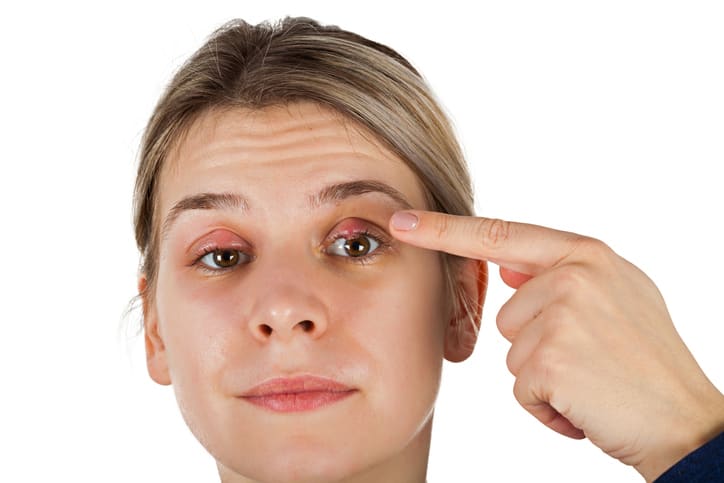What is a Stye, and How Should You Deal with It?

Have you ever had a stye? It usually starts with a little bit of pain or a feeling of heaviness in your eyelid, and you’ll notice a little red spot on your lower eyelid. It’s not harmful, but it can be unsightly, uncomfortable, and annoying. What, exactly is a stye? More importantly, how should you deal with it to make it go away?
A stye, also known as a hordeolum, is a bump near the edge of your eyelid caused by a localized infection in the eyelid. Styes develop from an eyelash follicle or oil gland that becomes clogged somehow, either from oil, debris, or bacteria. They can be a complication of blepharitis, an inflammation of the eyelid or they can be the result of stress.
The symptoms of a stye include watery eyes, pain, tenderness, itching, and redness. Styes can make eyes feel sensitive to light or bruised and can cause a feeling of a foreign body in the eye. They don’t impact vision, though, and they typically go away on their own, though not usually as quickly as the person with the stye would like. There are some things you can do to speed up the healing time:
- Use a warm compress. You can buy compresses especially made for eyes, or you can use a clean, warm washcloth as a compress. Just press the compress to your eyelid for about ten minutes, at least four times each day until the stye is healed.
- Massage the affected area. Use the tips of your fingers to gently massage the area, making sure your hands are scrupulously clean, and taking care not to poke yourself in the eye.
- Eye drops may help heal the infection. Your eye doctor can recommend medicated eye drops or antibiotic ointments that you might find helpful.
- Try eye lid scrubs. Specially formulated eyelid scrubs are similar to a moist towelette and are designed to address the underlying problems of bacteria or blepharitis.
You can sometimes prevent a stye by keeping your eyelids extremely clean. Don’t sleep in eye makeup, and avoid touching your eyes throughout the day. It may also help to manage your stress. It’s not always possible to avoid them, though, and if you do get a stye, it’s wise to try to reduce its duration. When a stye lasts for a long time, it can turn into a chalazion, which may require a steroid injection or lancing. Your doctor can lance the chalazion for you, but you should never try to squeeze or pop a bump on your eyelid at home. Squeezing a stye can cause a serious eye infection.
There are eyelid bumps that are not styes, like millia and xanthelasma. It’s a good idea to see a doctor if you have a bump on your eyelid, rather than assuming you know what it is and treating it at home. Your doctor will be able to correctly identify the bump on your eyelid and recommend the right treatment for your specific condition.
If you are looking for an eye doctor, the Gerstein Eye Institute in Chicago can help. Since 1968, the Gerstein Eye Institute has been providing exceptional ophthalmologic care to patients in the Chicago area. With decades of experience in ophthalmology, our certified professional staff members work hard to provide the kind of personalized care that keeps patients coming back year after year, eventually entrusting the eye health of their children and grandchildren to us as well. To schedule an appointment, call us at 773.596.9545 or contact us through our website.
